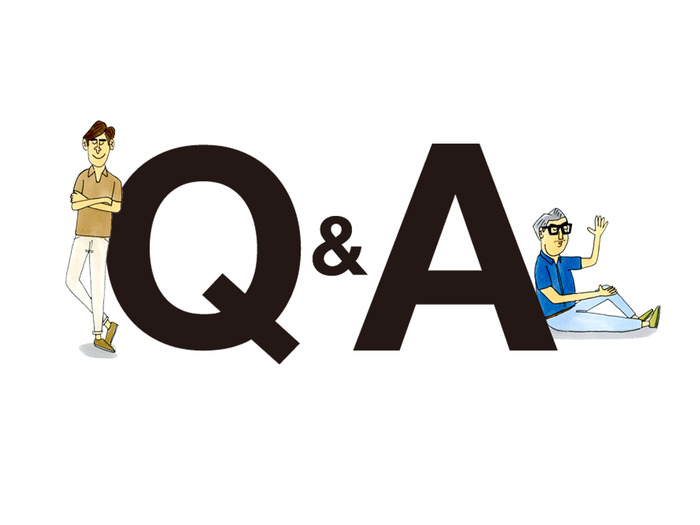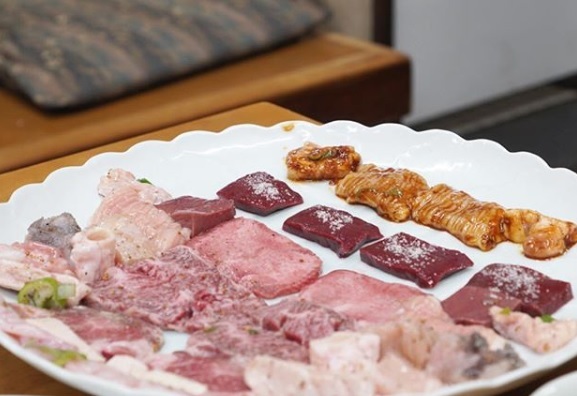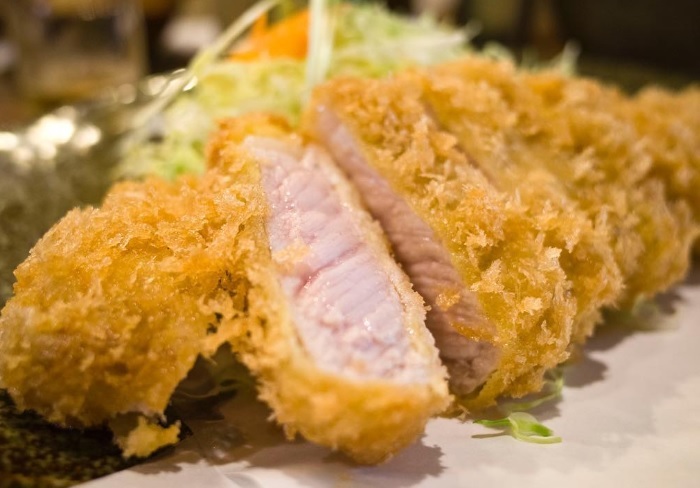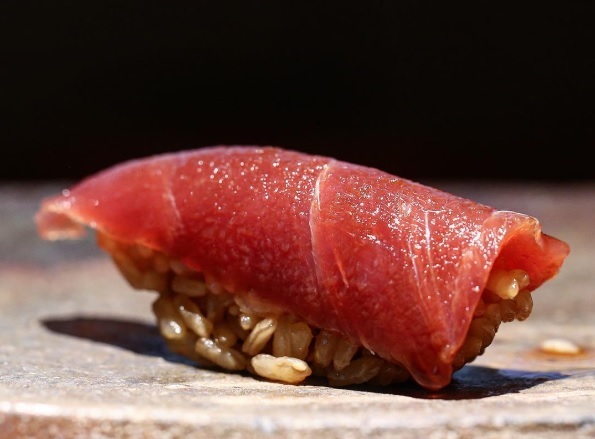All About Sukiyabashi Jiro
Jiro Ono, the owner chef of ''Sukiyabashi Jiro'' in Ginza.
Universally recognized as the world’s best sushi chef.
After having worked at a kaiseki restaurant in Shizuoka, a city where he was born and raised, Jiro trained for 14 years as a sushi chef at 'Yoshino, a famous Edo-mae sushi restaurant.
In 1965, when he was 40 years old, he took over the ''Yoshino Ginza branch'' and opened his own restaurant, ''Sukiyabashi Jiro''.
He is dedicated to improving the taste of his sushi, and since the opening of his restaurant, Jiro Ono's sushi has been continually evolving.
- Use shari (sushi rice) that is cooked to a hard consistency until it reaches the temperature of human skin,
- The shari is kept warm in a straw chest while the sushi is being made,
- Abalones are sprinkled with salt and steamed until soft,
(Until recently, abalones were usually served raw in sushi restaurants)
- Prawns are held as they are boiled,
- The Octopus is served with a small amount of coarse salt instead of tsume (sauce),
Many of the techniques that have become commonplace in today's high-end sushi restaurants were developed by Jiro Ono from the ground up through years of research and trial-and-error.
He was born on 27 October, 1925, and is 96 years old today.
Even in the midst of the COVID-19 pandemic, he stands at the counter every day, silently making sushi, and his presence itself is truly ''a miracle'' in this world.
The sushi of Sukiyabashi Jiro
The shari is made with rice vinegar "Shiragiku(白菊)", salt, and a tiny amount of sugar to give the rice shine and sharpness.
There are many sushi chefs in the world, but only Jiro Ono can achieve this unique balance of shari and fish in the mouth at the exact same time.
The sushi made by Jiro Ono is sophisticated and elegant.
- Kohada, with the tip of the tail twisted slightly to the left to show dynamism.
- The abalone that adheres closely to the shari (sushi rice).
- A sparkling sardine showing the freshness of the catch.
- The beautiful color of bonito after being smoked with straw.
The work of Jiro Ono, a rare artist who strives not only to express himself through exquisite taste but also through visual art or “eye candy”.
All the ingredients used are of the very highest quality.
The flavors of the fish served at Sukiyabashi Jiro are at their peak each season, which leaves an indelible impression in the memory of the taster.
This is the result of constant and clear, bi-directional communication with the stubborn wholesalers in Toyosu who are not easily imitated by any other sushi restaurant in the area.
Sukiyabashi Jiro’s Menu
The omakase course starts with
(1) white fish and squid, (2) tuna and kohada, stars of Edomae Sushi, (3) shellfish, shiny fish, and other seasonal ingredients, and
(4) The course ends with the standard salmon roe, sea urchin, and conger eel.
In the past, tuna was served in the theoretical order of "akami (read meat) → chutoro (medium tuna) → o-toro (large tuna)", but now it is served in the irregular order of chutoro (medium tuna) → o-toro (large tuna) → akami (red meat), with about four other pieces in between o-toro and akami.
The reason behind this change is that Jiro wants you to eat the most delicious part of tuna, the crowning jewel of sushi, while you still have an appetite.
The sea bream is served at sushi restaurants all over Tokyo as, arguably, the best white fish.
However, Jiro Ono never buys sea bream in Tokyo as he believes that “the sea bream available in Tokyo has swum through rough seas, which translate into unremarkable taste and aroma."
Sukiyabashi Jiro's Price
Currently the full course is priced at ¥55,000.
Although there are those who disagree with the aggressive approach of recent years regarding price increases, it is worth noting that today restaurants run by young sushi chefs who are barely out of training to, typically, charge upwards of ¥30,000 for a course.
Our proposal is that you take the price as a positive statement which equates to it being "reasonable, considering Jiro Ono's lifelong achievements”.
Customer service at Sukiyabashi Jiro
Jiro's customer service is often seen as challenging by customers.
It seems that there are some some unflattering articles on Google which can be found searching for keywords like:
"Sukiyabashi Jiro, bad attitude"
"Sukiyabashi Jiro got scolded."
"Sukiyabashi Jiro disappointed".
I can't help but notice the negativity in these search strings lol.
It is true that Sukiyabashi Jiro does not have the same cordial customer service as other high-end sushi restaurants in Tokyo.
From the time the first piece of white fish is served to the time you finish the melon for dessert, it takes about 30 minutes.
Jiro rarely engages in a conversation with the customers.
For the past few years, each seat at the counter has been equipped with a list of the items served on the day, but I wonder if they started such a system because it was annoying to be asked questions.
Well, you could say that such an eccentric approach reflects Jiro's belief that a sushi restaurant is a place to go to eat sushi, nothing more and nothing less, and that sushi has been fast food since the beginning of the Edo period.
People who don't think it's enough to look customers in the eye and greet them with a warm "welcome" when they arrive and show them gratitude with a heartfelt "thank you" when they leave, and especially those who want to
- enjoy a leisurely meal while conversing with their partner,
- eat their sushi accompanied by sake,
should desist from visiting the restaurant to avoid disappointment.
How to make a reservation at Sukiyabashi Jiro
Please refer to this article.
Sushi restaurants run by chefs from Jiro
For those who want to enjoy Sukiyabashi Jiro's sushi in a more relaxed atmosphere, I recommend the restaurants owned by Sukiyabashi Jiro’s graduates.
Many restaurants are adopting a more flexible, modern perspective, while maintaining the traditional “Jiro” essence firmly embedded within themselves.
In particular, lately there has been a succession of new restaurants, founded by young chefs, which are reminiscent of the Ginza Kyubei and Sushi Sho groups.
After visiting Sukiyabashi Jiro, it would be interesting to visit his apprentices’ restaurants to appreciate the differences.
◆Harutaka
Harutaka Takahashi, who trained at Sukiyabashi Jiro for 13 years and was the third in line behind Jiro Ono and his eldest son Yoshikazu, opened his own sushi restaurant in 2006. It is the first of the Jiro-style sushi restaurants. Takahashi is now counted as one of the leading sushi chefs in Japan.
The ingredients he uses are of the highest quality.
The shari he makes with rice vinegar and salt has a stronger taste than at Sukiyabashi Jiro.
The omakase course, including garnishes, is priced at ¥40,425 (including tax).
The price is towards the high end among Tokyo’s sushi restaurants, but if you like Jiro's sushi, you will definitely be satisfied.
Harutaka
6th floor 8-3-1 Ginza, Chuo-ku, Tokyo
03-3573-1144
17:00-24:00
◆Sushi Masuda
This is a sushi restaurant opened independently by Rei Masuda, who can be seen in the famous documentary "Jiro Dreams of Sushi”.
Masuda trained at Sukiyabashi Jiro for nine years. In addition to being a sushi chef, Masuda is also an ambitious businessman, and has diversified his business, opening sushi restaurants in Tokyo, Kyoto, Taiwan, and Ho Chi Minh City.
Maybe it's because his business has taken a break and he has too much free time on his hands (laughs), he restarted his career as a sushi chef in February 2022, and is now the owner and chef of Sushi Masuda in Omotesando, where he works at the counter every day.
The evening omakase course is priced at ¥35,200 (including tax).
Sushi Masuda
3-14-27 Minami-aoyama, Minato-ku, Tokyo
03-6438-9179
17:00-/20:00-
◆Sushi Mizukami
A sushi restaurant opened in 2018 by Michinobu Mizukami, who trained for 15 years at Sukiyabashi Jiro Roppongi which was run by Jiro Ono's second son.
Although he has only been in the business for about four years, Mizukami has over 20 years of experience as a sushi chef, and his sushi is highly regarded by many sushi connoisseurs. In fact, he is considered as one of Tokyo's most skilled sushi chefs today.
The large shari made with rice vinegar are reminiscent of Jiro's training, but the low-salted, straightforward taste shows Mizukami's unique approach.
The omakase dinner menu is priced at a relatively reasonable ¥22,000 (excluding tax).
Sushi Mizukami
3-8, Ichiban-cho, Chiyoda-ku, Tokyo
03-3230-0326
12:00-14:00
17:30-20:00
◆Sushi Ao
This sushi restaurant was opened in 2020 by Ryo Okazaki, who is described as "the strongest disciple in the history of Sukiyabashi Jiro," after completing 10 years of training.
The sign of the restaurant is "▲●", which is a motif of the letters “A” and “O”. For a moment, you may wonder if it is really a continuation of Jiro's heritage, but the sushi has a very authentic and classic taste. The shari has a strong sourness and saltiness from the rice vinegar, but the rice is cooked a little softer, which makes it easier to eat and gentler than other Jiro-style sushi.
The omakase menu for the evening is relatively expensive at ¥33,000 (including tax), but it has started to attract regular customers, and I hear that it is getting harder and harder to get reservations these days.
Sushi Ao
2nd floor 3-10-13 Kita-aoyama, Minato-ku, Tokyo
03-6450-5235
11:00-/12:30-
17:00-/20:00-
◆Sushi Masashi
Sushi Masashi was opened on June 2, 2020 by Masashi Yamaguchi, who trained at Sushi Masuda and served as the head chef of Sushi Wakon at the Four Seasons Hotel Kyoto.
The restaurant was awarded one star in the Michelin Guide Tokyo 2022.
Although there are faint traces of Jiro’s touch in the shari with the strong rice vinegar flavor, there are also glimpses of the perfect adoption of current trends such as the use of caviar and rice cooked with a harder consistency.
The lunch, composed of 17 pieces, is priced at ¥19,800 (including consumption tax) and is very satisfying.
If you are a beginner who has never experienced Jiro-style sushi, you may want to try this restaurant first.
Sushi Masashi
5th floor 2-12-27 Kita-aoyama, Minato-ku, Tokyo
12:00-
17:30-/20:00-
050-5457-1060
◆Sushi Shou
Sushi Shou was opened on July 18, 2021 by Mitsui Shou, who trained for 8 years at Harutaka in Ginza, Tokyo.
The restaurant is owned by Takeshi Kubo, the owner and chef of the famous kaiseki restaurant Goryu Kubo.
The omakase course consists of six to seven otsumami and about 12 pieces of sushi, but the quality of the ingredients shines through.
I'm glad to see that there are chefs from Goryu Kubo in the kitchen, so the quality of the otsumami is high.
As the years go by and the restaurant develops its own unique flavor, it has the potential to become an outstanding sushi restaurant.
The omakase course is priced at ¥33,000 (tax included).
Sushi Shou
2-15-1 Nishi-azabu, Minato-ku, Tokyo
03-6427-3237
12:00-
18:00-/20:45-
◆Koharu
This sushi restaurant was opened in October 2021 by Toshiyuki Kurita, who had trained at Harutaka's sushi restaurant in Ginza since its opening.
It is managed by Harutaka Takahashi and it is considered as the second branch of Harutaka.
As an affiliated restaurant, the quality of the ingredients and the seasoning of the shari are basically the same as at Ao’s main restaurant.
The omakase course is priced at ¥35,000 (tax included), which is about ¥5,000 cheaper than the master's restaurant.
The restaurant's reputation is not bad at first glance, but from a customer's point of view, the key to success will be whether you can think of a reason to visit Koharu instead of the famous Harutaka for the small price difference of ¥5,000.
Koharu
3rd floor 8-5-8 GInza, Chuo-ku, Tokyo
03-5962-8051
17:30-/20:30-
Q&A about Sukiyabashi Jiro
How can I make a reservation at Sukiyabashi Jiro?
In principle, reservations for foreign tourists are only accepted through the hotel concierge.
I heard that Sukiyabashi Jiro was removed from the three Michelin stars because it became difficult for the general public to visit.
Before Covid, it was indeed practically impossible to make reservations for first-time visitors. During the pandemic with Japan’s borders closed to tourists, it is now relatively easy to make reservations, but when Japan starts accepting tourists again in the future, it will be flooded with reservations again, and it will be difficult for ordinary people to make reservations as before.
When I visit, will I always be able to eat sushi made by Jiro Ono?
Besides Jiro Ono, his eldest son Yoshikazu also makes sushi at Sukiyabashi Jiro, so it depends on your luck who will be in charge on the day of your visit.
Jiro Ono, who is very old, may take some days off depending on his health.
Register account first.
Register










Comments 3
3
ChuToroZuke
I am not sure about the accuracy of the following information from an online source but it seems to make some sense and explains a few other things.
Sometime after World War Two, sushi restaurants in Tokyo started carrying maybe 2 or 3 kinds of sake at most. Before that, sake was not served at sushi restaurants, simply because people went to those places for sushi, and if they wanted sake they would go elsewhere. What's interesting is that the cold sake of choice at these post WWII sushi restaurants was almost always the brand Kamotsuru from Hiroshima (and hot sake was Kiku Masamune). This might partially explain why Sukiyabashi Jiro Honten carries (or carried) the small bottle of Kamotsuru Tokusen Daiginjo as their only sake offering. This is also to carry on that part of the tradition from back in the post WWII old days, unlike sushi omakase of today where there are upwards of 10 to 12 otsumami, then 10 to 12 pieces nigiri, with places that can carry 30+ different sake (eg. Sugita or arguably Kurosaki), where if you ask for recommended sake pairing, there would be upwards of 8 different pours just to match specific courses.
Also even back 20++ years ago, one would not go to a high end sushi restaurant and linger around drinking, hence keeping smaller sake selections (the etiquette would be not to get wasted from alcohol, and if a customer wanted to drink more they should be going to a bar). And even 20 years ago, supposedly many high end sushi restaurants would not have high end sake selections (and out of those perhaps one would carry Kubota and Juyondai).
So for Sukiyabashi Jiro and his sons to keep this specific part of the tradition and that part of time in history, ie one small sake that is symbolic with that period, to keep the focus entirely on sushi, so customers don't linger and concentrate on the sushi experience, is really commendable, even if it is a style perhaps not everyone might agree with. Makes me appreciate Sukiyabashi Jiro even more for what they are doing in keeping this historical perspective and insistence.
guest
For the sushi taste alone, Jiro honten is still one of my favorites. He makes a very old school preparation of aji-su that I've never had anywhere else, and it is amazing. Also still my favorite shari, I think.
Mizukami is probably my favorite new Jiro-school shop from the ones I've tried, he is a talented chef.
Looking forward to trying Ao when Japan reopens.
Leo Saito
chief editor, TokyoTableTripA story about Sukiyabashi Jiro, which I have been visiting frequently recently.